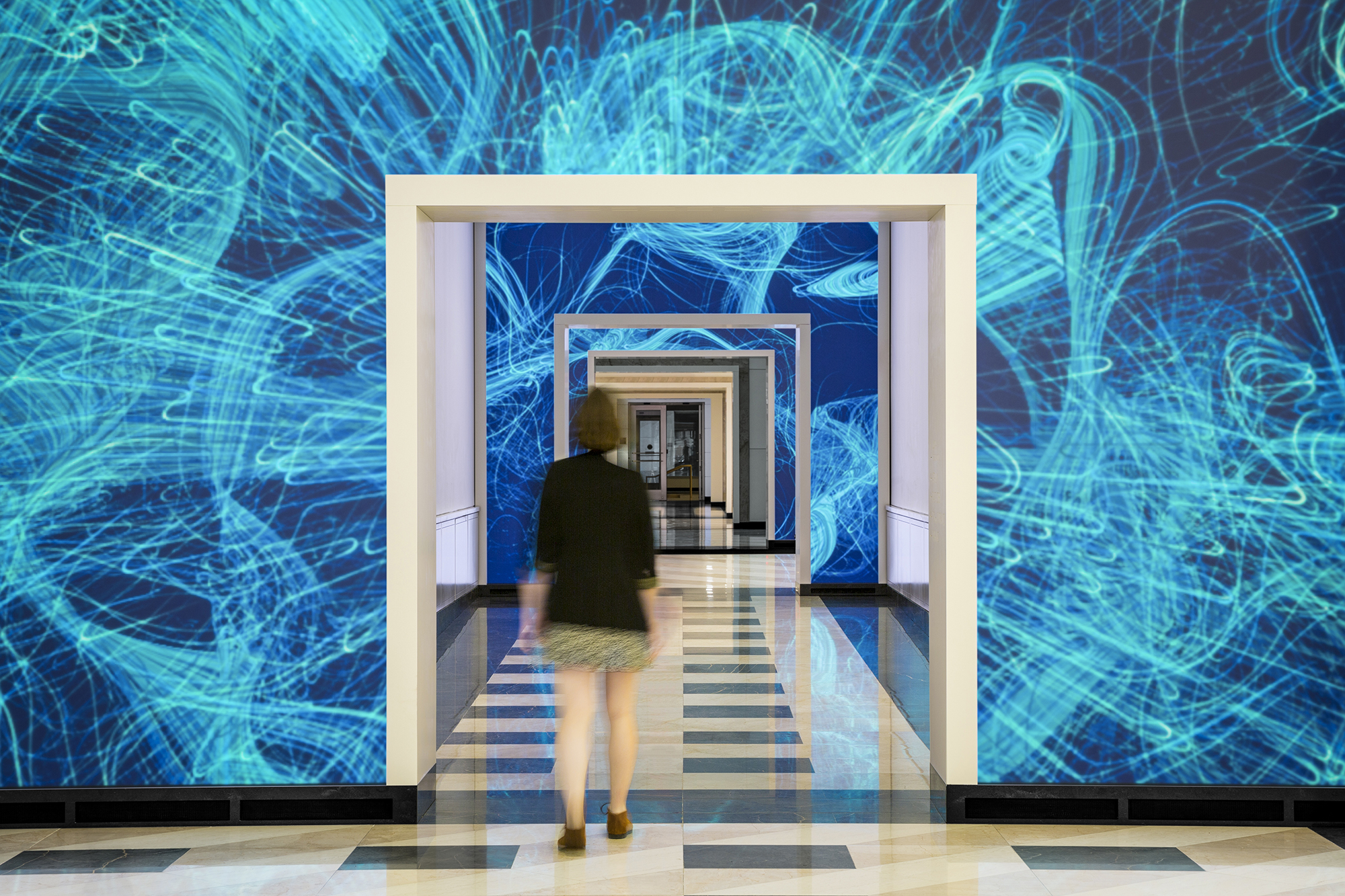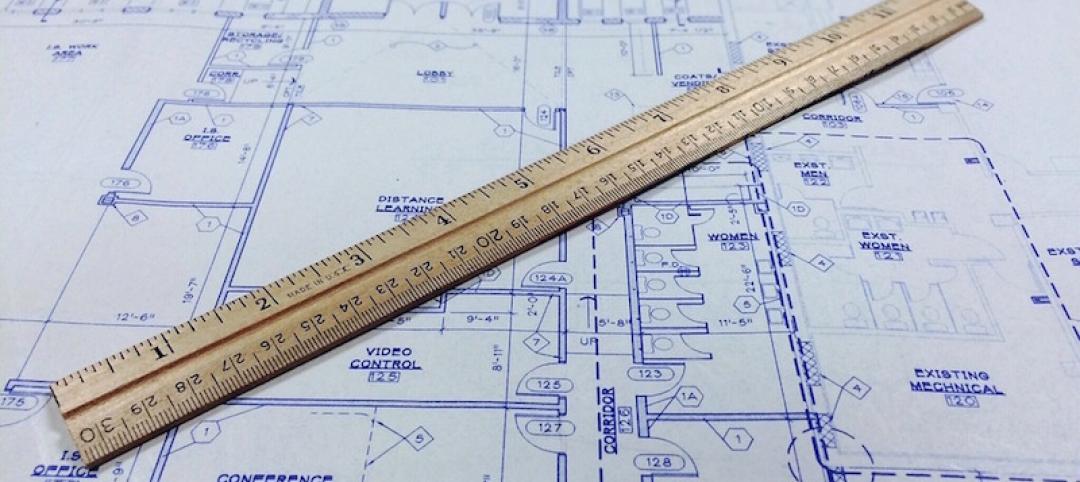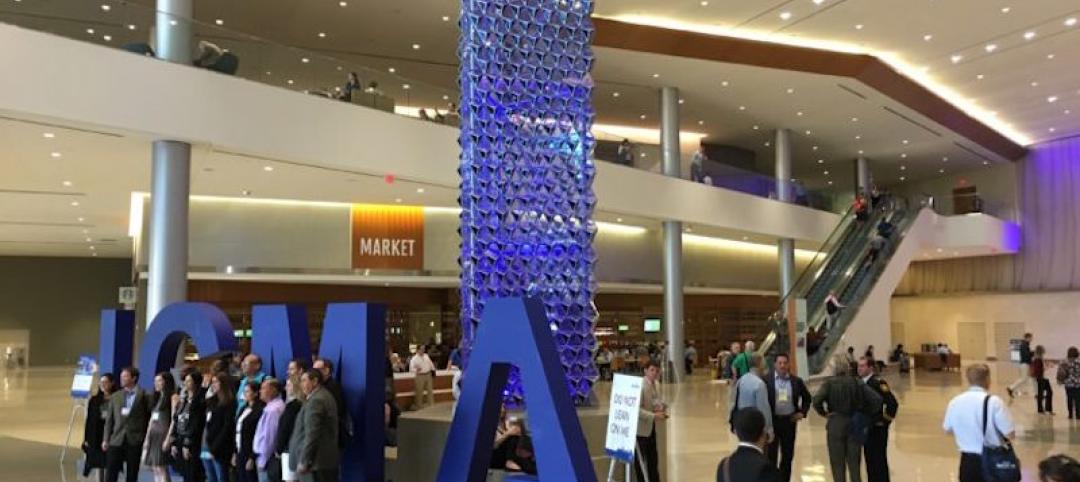NBBJ, the global architecture and design firm, today announced that it has acquired experience design studio ESI Design. The acquisition signals a new era where buildings will be transformed into immersive and interactive digital experiences that engage and delight.
By joining forces, NBBJ and ESI Design’s multidisciplinary team will be able to integrate digital experiences early in the design process, providing clients with more impactful and streamlined services.
Sweeping advancements in technology, from miniaturization to contemporary light projection technology, will make it possible for NBBJ and ESI Design to bring the type of immersive experiences that are increasingly desired as digital centerpieces in museums, stadiums, and transportation hubs to a wider range of industries, including healthcare, education, civic, commercial real estate, and science.
The two firms—which have previously collaborated on commercial real estate and corporate workplace projects in Boston and New York City—will now provide unified solutions as one of the largest and most robust experience design platforms in the country.
“By integrating the design of architecture and dynamic digital experiences, we will create boundless opportunities to energize the places we live, work, and play to stimulate our senses and inspire discovery, learning, and impact” said Steve McConnell, FAIA, Managing Partner of NBBJ. “The acquisition of ESI Design brings this vision to life and increases NBBJ’s ability to serve our clients as they activate their brands, create community, inspire wellbeing, and thrive.”
NBBJ is one of the largest architecture and design firms in the world, with clients that include Amazon, the Bill & Melinda Gates Foundation, Massachusetts General Hospital, Microsoft, and the University of Oxford. ESI Design has most recently received critical acclaim for its design of the immersive visitor experience at the Statue of Liberty Museum, which opened in May 2019. Other clients include Barclays, eBay, The Ellis Island National Museum of Immigration, PNC Bank, and WarnerMedia.
“We are at an exciting moment in time where the diverse skillsets of digital designers, media architecture technologists, gaming engineers and storytellers will partner with architects to create buildings as places that are lively, engaging and evolving,” said Edwin Schlossberg, the founder and principal designer of ESI Design. “NBBJ and ESI Design share a vision that well-designed spaces can bring ideas and brands to life in ways that inform, inspire, and delight. Through our partnership we will push the boundaries of what a building can be and help our clients bring people closer together through shared experiences – by seeking to design in ways that enable the environment to learn from its users so that it, and them get better with use.”
ALSO SEE: Tech Report 5.0: Digital Immersion
Under the agreement, ESI Design becomes NBBJ’s 18th studio. As part of the acquisition, Schlossberg becomes a partner at NBBJ and will lead the ESI Design studio at NBBJ.
Six ESI Design leaders will become principals at NBBJ: Alexandra Alfaro, Angela Greene, Cara Buckley, Emily Webster, Layne Braunstein, and Susan Okon. NBBJ will retain two office locations in New York City: The NBBJ New York office at 140 Broadway and ESI Design, an NBBJ studio at 111 Fifth Avenue. This will create a presence of 160 NBBJ employees in New York City, bringing the firm’s total employees to more than 800 worldwide.
Related Stories
Architects | Mar 9, 2018
Designing healthier buildings: Fitwel certification system
The Fitwel certification system is relatively simple and involves registering a building on a custom scorecard.
Architects | Mar 7, 2018
Balkrishna Doshi named 2018 Pritzker Laureate
Over the course of 70 years, Doshi was instrumental in shaping the discourse of architecture throughout India, from low-cost housing for thousands to landmark projects like the Indian Institute of Management.
Architects | Mar 7, 2018
New National Building Museum exhibit explores the architecture of the Manhattan Project
The exhibit will run through March 3, 2019.
Architects | Feb 27, 2018
But first, let me take a selfie: Designing sharable moments
The concept of “selfie walls” has been around for years, but with their growing popularity they have begun to evolve and take on a life of their own.
Market Data | Feb 27, 2018
AIA small firm report: Half of employees have ownership stake in their firm
The American Institute of Architects has released its first-ever Small Firm Compensation Report.
Museums | Feb 26, 2018
*UPDATED* Design team unveils plans for the renovated and expanded Gateway Arch Museum
The goal of the project is to create closer and more robust connections between the Gateway Arch Museum and the landscape of the Jefferson National Expansion Memorial.
Architects | Feb 23, 2018
AIA elevates 152 members and two international architects to the College of Fellows
AIA Fellowship recognizes significant contributions to profession of architecture and society.
Airports | Feb 21, 2018
Terminal Modernization: Why Bother? Part II
This is the second post in our series examining why airport operators should bother to upgrade their facilities, even if capacity isn’t forcing the issue.
Urban Planning | Feb 21, 2018
Leading communities in the Second Machine Age
What exactly is the Second Machine Age? The name refers to a book by MIT researchers Erik Brynjolfsson and Andrew McAfee.
Retail Centers | Feb 20, 2018
Is there a future in retail banking? Part II
It is critical to not view the physical branch as just another sales channel, but as an important touchpoint along a customer’s journey.
















